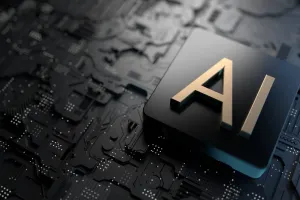How Does Blockchain Analysis Work?

In this buzz: What blockchain analysis is; how it works; why businesses use it, types of blockchain analysis tools, and what a Coinpath is.
1. Blockchain Analysis
Over the past few years, blockchain analysis has emerged as a significant business. According to Bitcoin News, the U.S. government spent over $6 million on blockchain analysis tools. As of today, blockchain companies have gathered total earnings of $80 million.
To understand what is driving this sudden increase in capital, we must understand what blockchain analysis is.
This technology that supports cryptocurrencies like Bitcoin is growing increasingly popular. Yet, not many people truly know why.
Blockchain is still evolving, and so far, the only activities it’s good for are illegal transactions and cryptocurrency speculation.
Since blockchain deals with cryptocurrency exchanges, there’s definite room for fraud. However, blockchain analysis also works to identify fraudulent transactions and ultimately take immediate action against suspicious activities.
Many businesses continue to work to find beneficial uses for blockchain analysis within their company. But few know what it is or why they should use it.
To provide a clearer understanding of this topic, let’s discuss the usage of blockchain analysis and its increasing role in today’s world.
2. History of Blockchain Analysis
The historical background of blockchain analysis stems from the beginning of cryptocurrency exchange attacks and frauds. In 2011, Bitcoin suffered its first major fraudulent attack. Hackers infiltrated the database and stole $500,000 from a single bitcoin user.
That same year, a digital wallet service organization called “MyBitcoins” disappeared from the Internet. Similar attacks kept occurring and, in 2012, forced several crypto exchanges out of business.
Another major exchange called BitStamp was hacked in 2015. The following year, the Bitfinex exchange lost $77 million to hackers.
This increasing fraudulent activity initiated the launch of blockchain analysis firms.
The number of crypto exchange attacks indicated a need for such services. As a result, between 2013 and 2017, various businesses established blockchain forensic or blockchain analysis firms.
Never Miss What’s Happening In Business and Tech
If you liked this content, subscribe for our daily emails with news and analysis from recognized market professionals. Stay informed and make good use of it.
Unsubscribe at any time. We do not spam and will never sell or share your email.3. What is Blockchain Analysis?
Blockchain analysis is the process of examining, recognizing, collecting, modeling, and visually depicting data on a blockchain.
The primary function of blockchain analysis is to discover practical information about the performance of varying factors in cryptocurrency. Private companies often conduct the process of analyzing public blockchains, such as Bitcoin.
4. How Does It Work?
Generally speaking, cryptocurrency businesses and other related organizations use blockchain analysis tools to reduce risk and become more adaptable.
By using risk reduction and security tools, blockchain analysis software helps administer adaptability.
For instance, most crypto exchanges want to prevent criminals from using their platforms and services to carry out illegal activities. To do so, they’ll use some blockchain analysis software to monitor all transactions related to their business.
Then, they’ll use blockchain analysis tools to examine suspicious transactions.
Businesses may also set guidelines to achieve their required duties based on the administration’s rules.
Additionally, blockchain analysis tools are practically necessary for crypto surveillance and investigations into illegal exchange activity. This technology allows legal authorities to track down the stolen funds and locate criminals.
Blockchain analysis software can recognize the services of cryptocurrencies. If that service administers a precise KYC (Know Your Customer) solution, then the blockchain analysis tool can locate the exact criminal.
5. Why Do Businesses Want to Use it?
As we explained earlier, blockchain technology, cryptocurrency exchanges, digital wallets, and crypto transactions are all at risk of hacking. Such a vulnerable business demands some security.
Enter blockchain analysis and blockchain forensics.
Blockchain analysis entails fund tracing and transaction monitoring. The companies that conduct this analysis continuously inspect each transaction.
In addition to this service, they regularly categorize and sort the transaction’s addresses. Then, specific addresses or groups of addresses are frequently screened. If any risky or suspicious activity occurs with the addresses, they receive an alert.
Additionally, blockchain analysis increases transparency in the flow of money. When it comes to crypto funds, understanding the process of money coming in and going out is a relatively tricky task—especially when transactions are joined to hundreds of addresses.
By reducing the amount of unnecessary information, blockchain analysis utilizes the most pertinent data. Analyzing crypto transactions can also effectively identify and group transaction trends.
Suspicious behavior will promptly be addressed, thus reducing illicit activities.
Information verification is also crucial to a company and blockchain analysis companies world to confirm the legitimacy of data on behalf of their client.
Blockchain analysis proves helpful by carrying out required checks on the claim of a client’s potential partners.
Finally, blockchain analysis firms also help keep track of stablecoins.
According to Investopedia, a stablecoin is a new cryptocurrency backed by a reserve asset and looks to stabilize prices. They essentially fix their market value on an external reference, like the U.S. dollar, or the value of some other commodity, like gold.
Overall, businesses look to blockchain analysis tools to get a clearer picture of blockchain transactions and obtain a transparent scene of funds transfer.
6. Blockchain Analysis Tools
Blockchain analysis resources aim to supply transaction screening, risk evaluation, investigation tools, and other benefits.
The main idea is to analyze transaction practices and associate real-world identities with blockchain addresses. Providing the right tools is necessary to do so effectively. Below are the essential purposes of a blockchain analysis tool.
Investigation Tool – Provide resources to monitor transactions manually and investigate blockchain addresses.
Risk Analysis and Transaction Monitoring – Evaluate the level of risk involved with the origin, flow, and record of funds; Monitor all business-related transactions.
Address Classification – One of the primary uses of blockchain analysis tools is to apply various techniques to link physical identities with blockchain addresses.
7. Blockchain Analysis Software
While hundreds of blockchain analysis software are available, Chainalysis and Coinpath are among the most popular and commonly used today. Below, we’ve briefly explained the details behind these two prominent blockchain analysis software.
Chainalysis
Established in 2014, Chainalysis is one of the most trusted blockchain analysis businesses. Today, the company has raised over $45 million of funds. Government agencies look to Chainalyiss to host its services. The list includes the DEA, FBI, IRS, among others.
Today, the company supports approximately 90 of the top cryptocurrencies. Nearly 350 total companies have used Chainalysis in 45 countries.
But how does blockchain analysis apply to Chainalysis as it works in the present world?
Chainalysis’s most popular product is the KYT (Know Your Transaction) service. This service is also commonly known as Chainalysis KYT. Specific patterns of fraudulent activities take place in the world of cryptocurrency.
These patterns include fraudulent attacks related to the darknet or suspicious transactions.
Chainalysis provides services that locate and identify all activities prone to risk. However, identifying and tracking potential frauds or suspicious activity isn’t enough.
As a result, Chainalysis offers even more services to clients.
To make clients aware of abnormal transactions, Chainalysis sends out alerts. These alerts are sent as the process occurs. Also, they comply with the anti-money laundering regulations most companies enforce.
These alerts offer a lot of advantages to companies. Firstly, businesses can use them to freeze deposits when it’s necessary.
Also, they can be used to track and trace fraudulent accounts and stop illegal withdrawals. Finally, in the case of ransomware, Chainalysis’ alerts can prevent threats.
Another popular service of Chainalysis is the Chainalysis Reactor tool. Chainalysis Reactor works to determine the owners of cryptocurrency and identify their addresses.
The Chainalysis Reactor also provides users with any gathered data from social media. In addition, this tool generates easily understandable visuals detailing the flow of money. And in the case of fraud, the Chainalysis Reactor presents the case with graphs and annotations.
Additionally, Chainalysis offers users Kryptos, another helpful tool that provides a detailed profile portfolio of each cryptocurrency business. Kryptos features over 1,800 of these profiles.
The profiles include information involving the latest news on these crypto companies, their locations, details on their KYC policies, and more.
Coinpath
Like Chainalysis, Coinpath offers users analytics regarding money flow and transactions with different blockchains. In addition, Coinpath provides solutions for a variety of problems.
Generally speaking, cryptocurrency and exchanges took all the aspects of physical cash and essentially digitized them.
However, this has led to an increase in fraudulent activity. Some people are taking advantage of this vulnerability and using crypto for illegal actions. For example, in 2018, the dark web experienced market growth of $872 million, and in 2020, this amount increased to over $1 billion.
But unlike cash, blockchains offer transparency—making each transaction traceable. So by using Coinpath, users can keep track of their money flow.
It typically depends on how much power you hold to make decisions regarding to cryptocurrency compliance. In most cases, compliance policies are similar to those created by the FATF (Financial Action Task Force).
In the case of all businesses, monitoring transactions is one of the requirements among compliance policies.
Additionally, there’s always the chance of users using your services to send or receive money for criminal activities. Coinpath conveniently lets you monitor the carrying out of transfers from your service, and its journey to outside addresses.
However, users completing illegal transactions typically use more than one digital wallet. This technique adds complexity to their money trail, making it harder to track them or the money.
The unknown nature surrounding cryptocurrencies makes it difficult to follow the illegal flow of money. As a result, criminals tend to conduct money laundering through cryptocurrencies to obscure the illicit transaction of funds.
But by giving users access to the trail of money through each intermediary wallet, Coinpath solves this problem. Users can then easily track and locate the funds.
8. SWOT Analysis of Blockchain Technology
Below, we’ve created a brief SWOT analysis of blockchain technology and its role within global trade finance.
Strengths
- Removes centralization, which gives users full access to the data.
- Efficiency of operations.
- Eliminates interference of data storage and ensures secure encryption.
- Enables users to share information about specific products or deals easily.
- Reduces the amount of physical documentation to be filled, checked, and passed back and forth. Everything is recordable through blockchain.
Weaknesses
- The world of business is constantly evolving; Blockchain remains unchangeable, which could cause some issues.
- Blockchain is a non-modular technology. An outdated module of encryption is difficult to replace.
- The rules of a business can change, and exporting data to a new blockchain with the correct data models is complex.
- Could potentially cause conflict among GDPR regulations.
- Beginners can’t easily understand blockchain technology. To reach mass adoption, extensive education is necessary.
Opportunities
- It offers a sizable foundation for further usage of big data.
- Instead of Facebook or Google using your information, it puts the control back into the hands of users.
- Now, you can choose who can and can’t access your data. The blockchain will store all these decisions.
- As the world advances in technology, people will become more willing to accept blockchain analysis.
Threats
- Issues with the ability to be used
- Ever-changing environment
- Unfavorable centralization
- Future quantum computers which could decrypt data
- The potential for hacks and mining attacks
Conclusion
Trading and investing with cryptocurrencies is, without a doubt, risky. Hackers may trace addresses to launder money, and fraudulent attacks are a common threat.
This prompts many businesses to seek blockchain analysis tools to closely monitor and quickly address suspicious or illegal activity.
Blockchain analysis or blockchain forensics is, therefore, a necessary tool. A tool for exchanges to protect themselves from hacks. A tool for businesses to choose and collaborate with suitable types of partners. A tool to detect frauds beforehand.
Additionally, blockchain analysis doesn’t stop at identification, and blockchain analysis firms go the extra mile to ensure the safety and security of your business.
These firms take necessary steps to protect, track and trace. By gathering information and documenting it, this assurance improves the business environment.
As crypto exchanges and blockchain technology continue to advance and grow in popularity, the need for blockchain analysis tools will only get bigger.
“If you don’t believe it or don’t get it, I don’t have the time to try to convince you, sorry.”
-Satoshi Nakamoto
DISCLAIMER: We are a publisher that publishes impersonal views which are not adapted to any specific person, portfolio or need. You understand that no content published as part of the information provided herein constitutes a recommendation that any product, service, particular investment, security, portfolio of securities, transaction or investment strategy is suitable for any specific person. You further understand that none of the creators, providers or publishers of the information contained in this advertisement, or their affiliates, will advise you personally concerning the nature, potential, value or suitability of the product, service, any particular investment, security, portfolio of securities, transaction, investment strategy or other matter. The information herein is provided and should be considered only for general informational purposes only and should not be considered or relied upon as investment advice. We are a publisher only, and is not a securities broker or dealer, nor is the Company an investment advisor. To the extent that any of the information published as part of this advertisement may be deemed to be investment advice, such information is general and impersonal and not tailored to the investment needs of any specific person.
There is no guarantee that you will profit from your trading activity and it is possible that you may lose all of, or if trading on margin more than, your investment. Some of the results shown may be based on simulated performance. SIMULATED OR HYPOTHETICAL PERFORMANCE RESULTS HAVE CERTAIN INHERENT LIMITATIONS. UNLIKE THE RESULTS SHOWN IN AN ACTUAL PERFORMANCE RECORD, SUCH RESULTS DO NOT REPRESENT ACTUAL TRADING. ALSO, BECAUSE THE TRADES HAVE NOT ACTUALLY BEEN EXECUTED, THE RESULTS MY HAVE UNDER OR OVER-COMPENSATED FOR THE IMPACT, IF ANY, OF CERTAIN MARKET FACTORS, SUCH AS LACK OF LIQUIDITY. SIMULATED OR HYPOTHETICAL PROGRAMS IN GENERAL ARE ALSO SUBJECT TO THE FACT THAT THEY ARE DESIGNED WITH THE BENEFIT OF HINDSIGHT. NO REPRESENTATION IS BEING MADE THAT ANY ACCOUNT WILL OR IS LIKELY TO ACHIEVE PROFITS OR LOSSES SIMILAR TO THOSE SHOWN. Past performance is not necessarily indicative of future performance. This brief statement cannot disclose all the risks and other significant aspects of trading. You should carefully study trading and consider whether such activity is suitable for you in light of your circumstances and financial resources before you trade.Full Disclaimer Here
TRENDING ORIGINALS
Never Miss What’s Happening In Business and Tech
Trusted By 450k+ Readers







